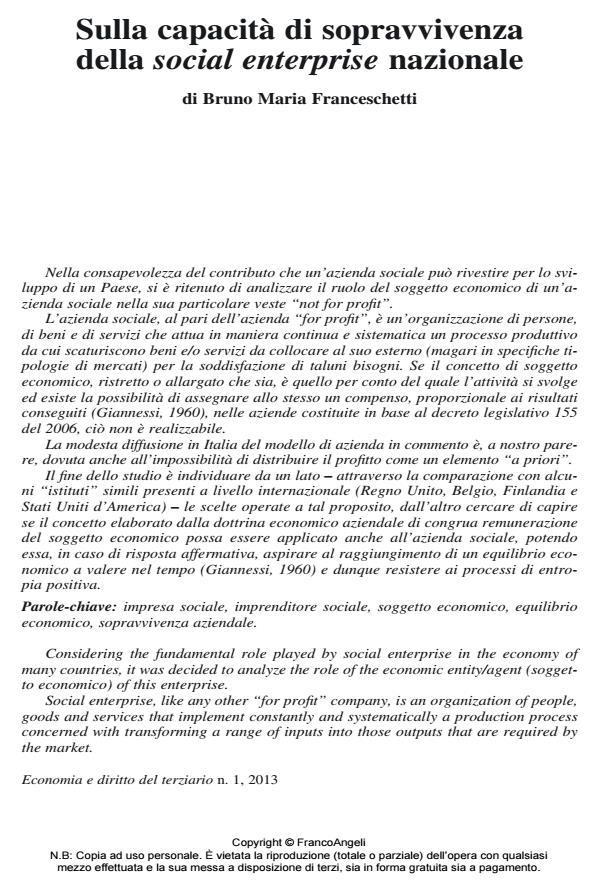Sulla capacità di sopravvivenza della social enterprise nazionale
Journal title ECONOMIA E DIRITTO DEL TERZIARIO
Author/s Bruno Maria Franceschetti
Publishing Year 2013 Issue 2013/1
Language Italian Pages 23 P. 127-149 File size 166 KB
DOI 10.3280/ED2013-001006
DOI is like a bar code for intellectual property: to have more infomation
click here
Below, you can see the article first page
If you want to buy this article in PDF format, you can do it, following the instructions to buy download credits

FrancoAngeli is member of Publishers International Linking Association, Inc (PILA), a not-for-profit association which run the CrossRef service enabling links to and from online scholarly content.
Considering the fundamental role played by social enterprise in the economy of many countries, it was decided to analyze the role of the economic entity/agent (soggetto economico) of this enterprise. Social enterprise, like any other "for profit" company, is an organization of people, goods and services that implement constantly and systematically a production process concerned with transforming a range of inputs into those outputs that are required by the market The purpose of any company is to reach a certain economic balance, valid over time, which could offer an adequate return to input factors and reward the economic entity/agent on whose behalf the activity in question takes place, in proportion to the results achieved (Giannessi,1960). In companies incorporated under the Italian Law and in accordance with the Italian social enterprises Law (D.lgs 155/2006), the adequate remuneration owed to the economic agent or entity is not achievable. Does it mean that social enterprises can never aspire to achieve "a certain economic balance valid over time"? We think that the low spread of the Italian social enterprise depends on the non-distribution constraint. The purpose of the study is to identify, on the one hand, comparing some similar foreign "social enterprises" (the Community Interest Company in United Kingdom, the Société à finalité sociale in Belgium, the Sosiaalinen yritys in Finland, the Low Profit Limited Liability Company and the Benefit Corporation in the United States of America) the different choices made by different countries in this regard, on the other hand, trying to understand if the concept elaborated by the Italian doctrine of «adequate remuneration owed to the economic agent/entity» can be applied to social enterprises.
Keywords: Social enterprise, social entrepreneur, economic entity/agent, economic balance, survivability.
Bruno Maria Franceschetti, Sulla capacità di sopravvivenza della social enterprise nazionale in "ECONOMIA E DIRITTO DEL TERZIARIO " 1/2013, pp 127-149, DOI: 10.3280/ED2013-001006